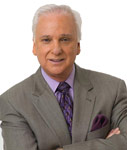
On September 30, 2005 a newspaper in Denmark Jyllands-Posten published an article under the headline, "The face of Muhammad" — an article that included 12 cartoons of the prophet. Here's some of what Danish journalist Flemming Rose said in his newspaper:
"Modern, secular society is rejected by some Muslims. They demand a special position, insisting on special consideration of their own religious feelings. It is incompatible with contemporary democracy and freedom of speech, where one must be ready to put up with insults, mockery and ridicule. It is certainly not always attractive and nice to look at, and it does not mean that religious feelings should be made fun of at any price, but that is of minor importance in the present context. … We are on our way to a slippery slope where no-one can tell how the self-censorship will end. That is why Morgenavisen Jyllands-Posten has invited members of the Danish editorial cartoonists union to draw Muhammad as they see him."
Later, Rose said this to the Washington Post: "The cartoonists treated Islam the same way they treat Christianity, Buddhism, Hinduism and other religions. And by treating Muslims in Denmark as equals they made a point: We are integrating you into the Danish tradition of satire because you are part of our society, not strangers. The cartoons are including, rather than excluding, Muslims."
After the cartoons were published there were riots in many cities around the world. To show that theirs was a religion of peace, angry Muslims set buildings on fire and vandalized churches, and according to the New York Times more than 200 people were killed — all because the Danish paper violated Muslim law by depicting the image of Mohammad.
On February 7, 2006, the New York Times ran an editorial, explaining why the newspaper of record would not show its readers the cartoons. "The New York Times and much of the rest of the nation's news media have reported on the cartoons but refrained from showing them. That seems as reasonable choice for news organizations that usually refrain from gratuitous assaults on religious symbols, especially since the cartoons are so easy to describe in words."
Bull! The Times was afraid of what might happen to its journalists and its property if they published the cartoons. Let's stipulate that the fear was legitimate. What happened in Paris in January 2015 might have happened at the Times in New York ten years earlier if they had published the Danish cartoons.
By the way, one day later — one day! — the very same New York Times published a story on "the power of imagery" in which it showed a picture of a painting by Chris Ofili called "Holy Virgin Mary," which depicted Mary covered in elephant dung and little cutouts of pornographic pictures.
On February 7 the Times was concerned about "gratuitous assaults on religious symbols." On February 8 it showed a picture of the Virgin Mary covered in elephant crap.
Why was it okay to show a piece of art that offends Christians but not a cartoon that offends Muslims? We know the answer, of course. It takes no courage to offend Christian sensibilities. Angry Christians won't firebomb the Times Building. But let's be clear: The Times was right when it published "Holy Virgin Mary" since the painting had caused a great deal of controversy. But so did the Danish cartoons. Appeasing radical Muslims doesn't make them more reasonable. Now we have Paris.
And now we'll see if the media are still afraid of Muslim extremists. Now the press and television have an opportunity to show courage: Publish the French cartoons that mocked Islamic fanatics on page one of the New York Times, the Washington Post, the Wall Street Journal and every other paper in the country. Run the cartoons on ABC, NBC, CBS and all the cable news outlets.
The attack this time was in Paris. But everyone knows — especially journalists — that it was an attack on American values and democratic values everywhere. What happened in Paris was an attack on every news organization in every country everywhere in the world where people believe in a free press.
Let's see how journalists respond.
Comment by clicking here.

JWR contributor Bernard Goldberg, the television news reporter and author of several bestselling books, among them, Bias, a New York Times number one bestseller about how the media distort the news. He is widely seen as one of the most original writers and thinkers in broadcast journalism. Mr. Goldberg covered stories all over the world for CBS News and has won 10 Emmy awards for excellence in journalism. He now reports for the widely acclaimed HBO broadcast Real Sports.
He is a graduate of Rutgers University, New Brunswick, New Jersey and a member of the school's Hall of Distinguished Alumni and proprietor of BernardGoldberg.com.


 Contact The Editor
Contact The Editor
 Articles By This Author
Articles By This Author